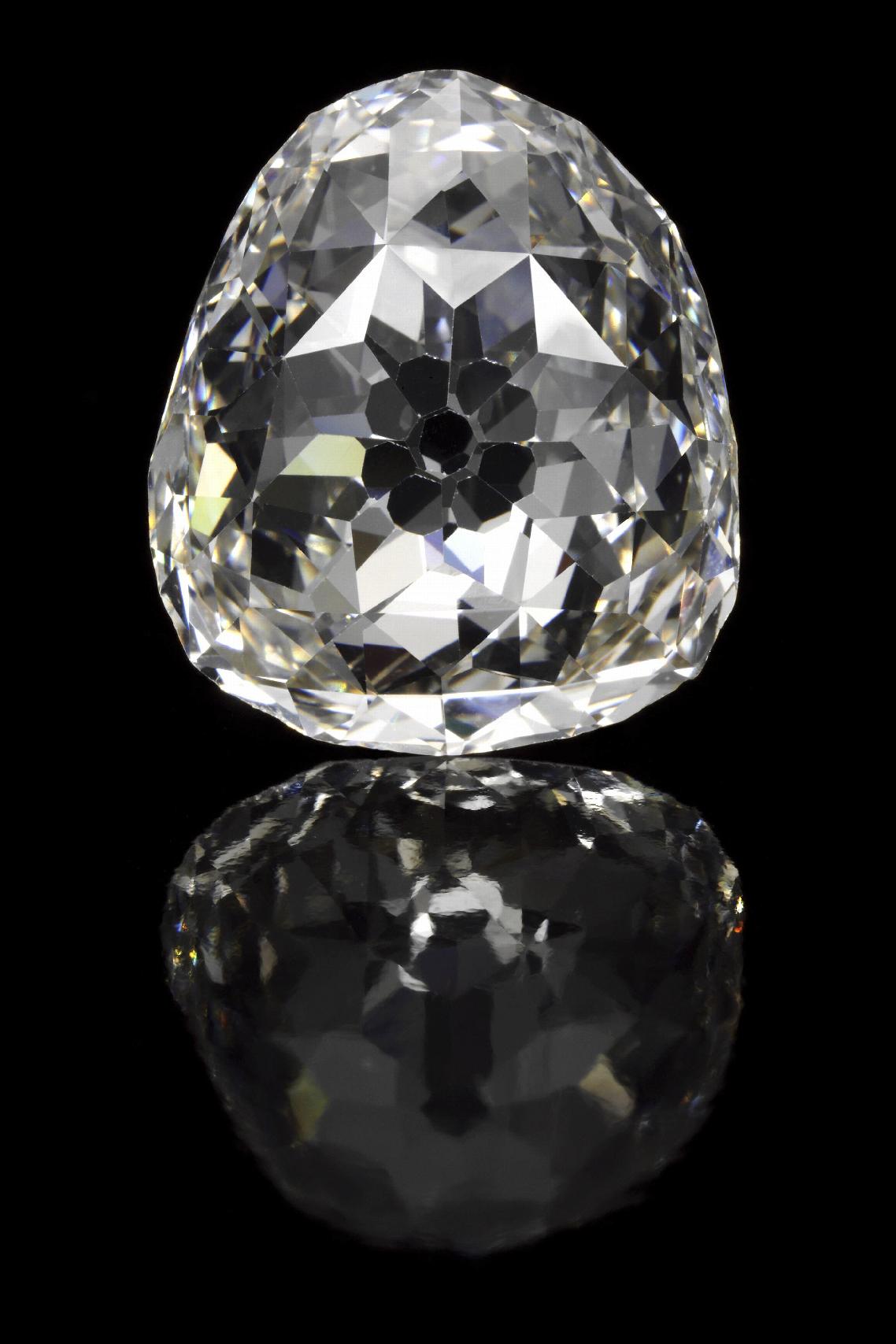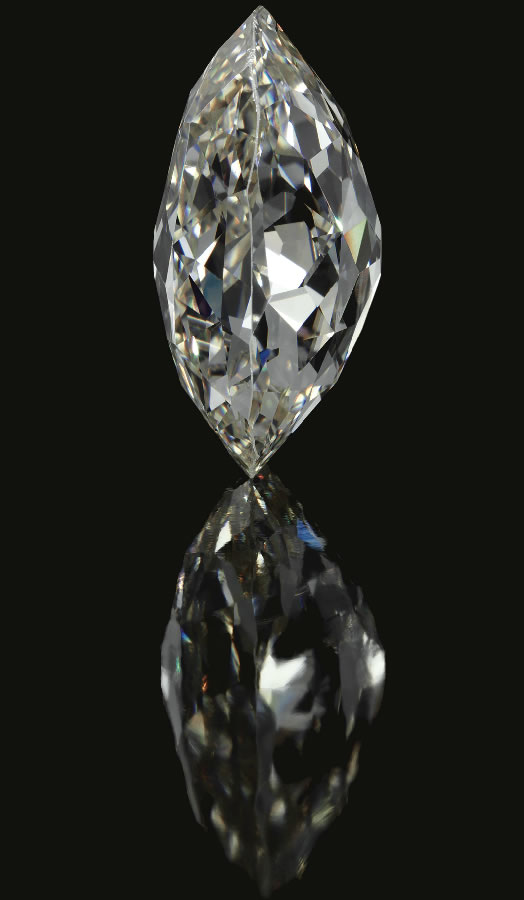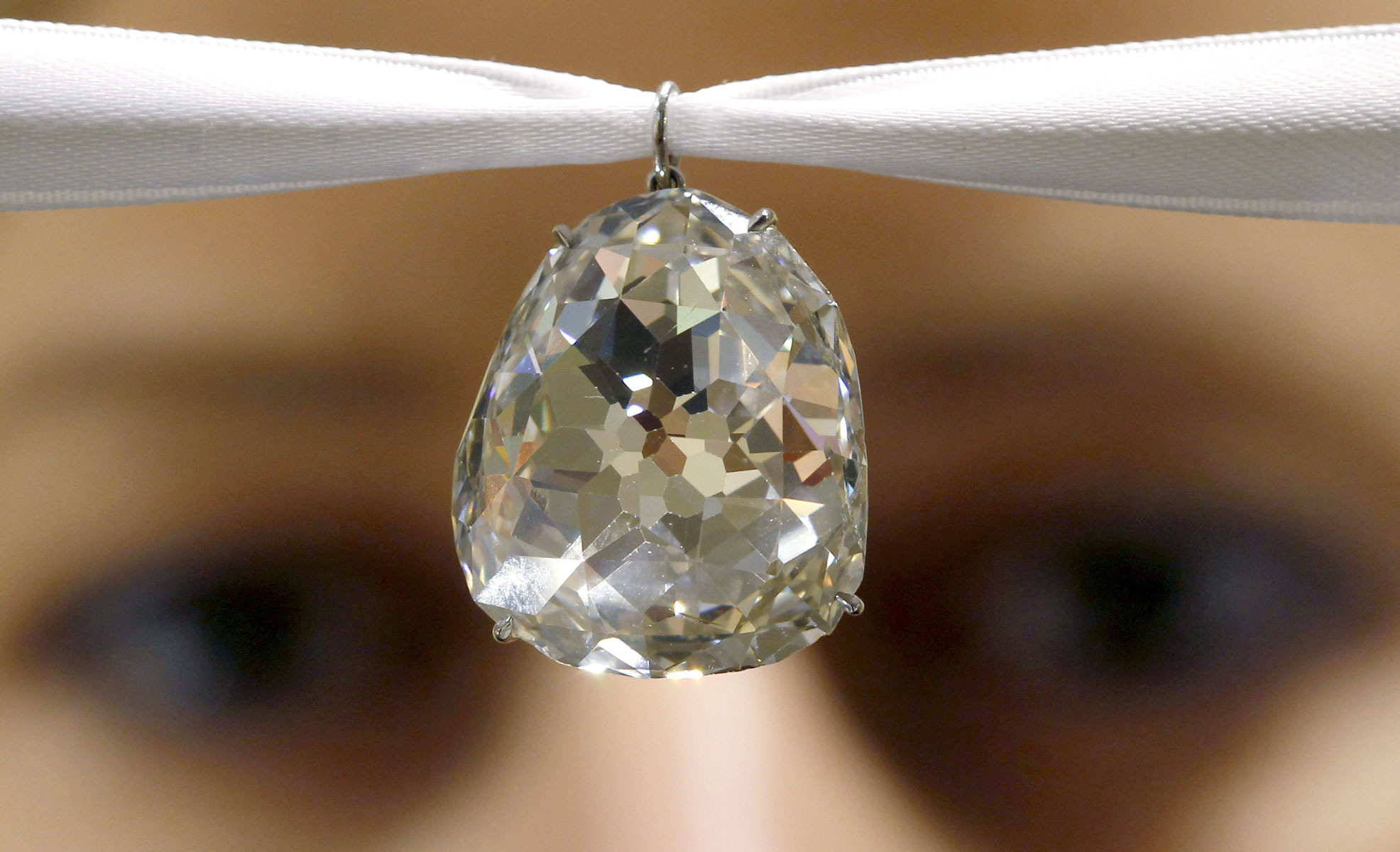Beau Sancy
The Beau Sancy is a 34.98 - carat diamond. The stone was the star among the crown jewels of the Prussian Hohenzollern, and was worn by the Queen of Prussia. It is also called the "little Sancy " or " le beau Sancy " and should not be confused with the larger Sancy with 55.23 carats.
When the diamond is probably the first stone that was ground at eight times the arrangement of the 110 facets. It has a height of 22.3 mm and a width of 19.5 mm and is polished in drop form, the old silver version from around 1600 with the golden claws is original. Later a small brilliantly combined eye was applied.
The stone probably came from the mines in the region of the Indian city of Golconda, the reference of famous diamonds such Hope, Koh-i- Noor and Regent.
History
One of the first owners of the Beau Sancy was Nicolas de Harlay, the. Services in the French King Henry III stood and the diamond end of the 16th century acquired as an ambassador at the court of Sultan Selim II in Constantinople Opel. Through him, the great and the small Sancy got their name. In 1589 he offered both the Sancy diamond at the Duke of Mantua, in 1596 acquired Elizabeth I of England the great stone. In 1604, the Beau Sancy for only 75,000 livres ( 25,000 Écu ) by Henry IV was purchased from France, who gave him his wife Maria de ' Medici, the stone was inventoried at her.
Maria de ' Medici was the Beau Sancy attach as lace in the crown, which she wore at her coronation ceremony in 1610. As a widow, she had to sell the stone later because of their debt. He was purchased for 80,000 guilders, Frederick Henry of Orange- Nassau, his most important issue in the state budget of the United Netherlands of the year 1641. The Beau Sancy served as a dowry in the arranged marriage between his son Willem, who later became William II of Orange- Nassau, and Mary Henrietta Stuart. This drew in 1650 after the death of her husband with the jewelry back to England. 1662 Beau Sancy was pledged to settle their debts left behind. In 1677, on the occasion of the wedding of Willem III. of Orange- Nassau and Mary Stuart II, the diamond went to the bride and as the couple in 1689 ascended the throne of England in the British Crown Jewels. Since the marriage remained childless, received after her death, the house of Orange- Nassau, the jewel back. In the debate over the so-called inheritance oranische to 1702 Frederick I, King in Prussia, successfully fought alongside a few counties the Beau Sancy and let him insert into the Prussian royal crown, with which he had himself crowned in the previous year in Königsberg itself.
Frederick II, who refused any demonstration of jewel glory for himself, leaving the Beau Sancy 1740 his wife Elisabeth Christine at leisure. She arranged it as the center of a loop and also in a bouquet as pendeloque. In this form, other female members of the Prussian royal house later have the diamonds on important occasions, especially in their marriage into the House of Hohenzollern worn. The gem was also 1918, after the end of the monarchy in Germany, in the possession of the Hohenzollern and continued to be driven in the family.
The Beau Sancy was in Munich in 2005 at the exhibition " treasure houses of Germany. Art " shown in aristocratic private property in the Haus der Kunst.
On May 15, 2012, the House of Hohenzollern the Beau Sancy to Sotheby's gave to Geneva at an auction where he for 9.04 million Swiss francs ( 7.52 million euro = ) was purchased by an anonymous bidder.










